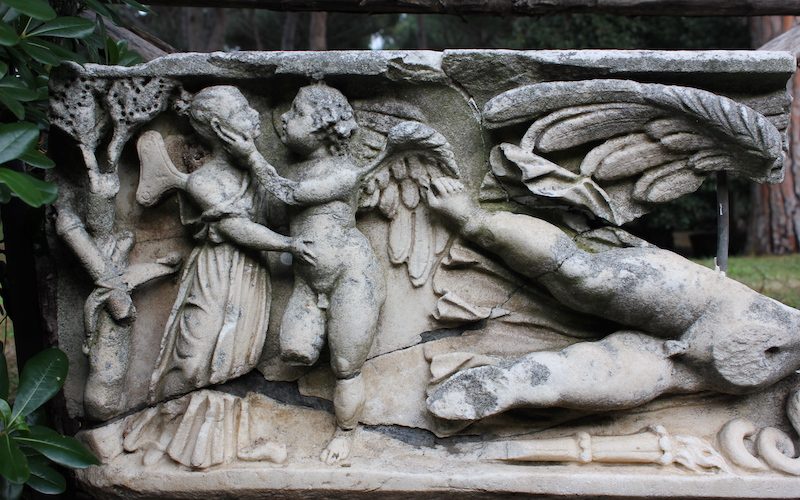The forbidden image of the penis
- 6 June 2019
- Posted by: Michael H Hallett
- Category: History , Patriarchy ,

Some years ago, I read that the children of the Roman aristocracy used to wear a small penis-shaped charm called a fascinum. The charm signalled that they were members of the nobility and if anyone messed with them, they would be messed with—seriously. (The word ‘fascist’ derives from fascinum.) It intrigued me that the symbol used to protect these children was a penis.
I’ve been equally fascinated by the absence of images of the penis in film. Cinema is littered with female nudity, including genital nudity. Yet the penis rarely creeps into the frame other than in porn (and European arthouse films).
I read an IMDb review of a film once. I forget the film, I think it had Dennis Hopper in it. A female reviewer was scathing of a shot of full-on male nudity. The reviewer was clearly emotionally triggered by the image of the penis.
And of course many statues and carvings depicting penises have over the centuries been ignominiously covered with fig leaves or defaced, like these poor guys (above) at Ostia Antica, near Rome.
Jigsaw pieces
These three jigsaw pieces jostled in my head until the light went on.
In a blog titled The Alien inside us, I recently wrote about what I term the ‘lower masculine victimizer’, a piece of psychological programming we all carry which is the unavoidable outcome of a patriarchal social structure:
“Generally thought of as the dominion of men over women, patriarchy is more accurately the dominion of the (masculine) victimizer over the (feminine) victim… the history of civilization is actually the history of victimization—right up to today. Regardless of gender, whenever we try to enforce or coerce to achieve our wants, our victimizer energy is in play.
This impulse to victimization might be termed the ‘lower masculine victimizer’. I use the word ‘lower’ because the masculine qualities of strength, intelligence and anger can all be expressed in a ‘higher’, protective manner. Here they are used to mitigate lack at the expense of others—and to express primal pain.”
The lower masculine victimizer gains pleasure from pain. The penis is its physical embodiment. Weapons—swords, knives, guns; all with a shaft-like shape and a pronounced tip—also embody the victimizer.
But the archetype is the penis. It’s the aroused extension of its wielder. It gives sexual pleasure from penetration—the physical or sexual conquest of the other.
In The Function of the Orgasm, psychoanalyst Wilhelm Reich wrote that “the penis as such functioned in the fantasy… The penis was a murderous weapon or it was used to ‘prove’ that one is potent”. Some of Reich’s male patients felt their penis was a knife. Penetration equated to stabbing: sex was fundamentally an act of violence.
Fucked over
When you saw a penis, historically that meant you were about to be fucked over.
In The History of Childhood, Lloyd deMause writes that “To the Greeks and Romans, the glans [tip of the penis] was considered sacred; the sight of it ‘struck terror and wonder in the heart of man[1].’”
If you were a man, a sword or spear was about to run you through. If you were a woman, you were about to be raped—and possibly killed. During the rape of Nanking in 1937, Japanese troops raped and killed 20,000 Chinese women. Many of them were killed by a bayonet through the vagina.
Over thousands of years this symbolism became embedded in our collective unconscious. The Roman fascinum warned: touch this child and we’ll fuck you over. The woman on IMDb recoiled from Dennis Hopper’s nudity from age-old survival fears. Statues were defaced to ward off its malevolent presence.
Because of its unconscious link to the lower masculine victimizer, the penis remains our most forbidding—and hence forbidden—image.
Photo by Michael H Hallett
Footnotes
[1] Thorkil Vanggaard, Phallos: A Symbol and its History in the Male World
